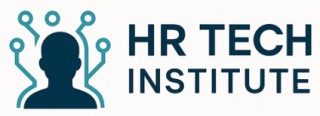
The Role of HR Tech in Identifying Employee Strengths
Harnessing HR Tech for Identifying Key Strengths
In today's competitive work environment, understanding the strengths of your employees is essential for organizational growth and performance management. HR technology plays a pivotal role in this process by offering tools to identify and analyze employee strengths, enhancing both individual and team dynamics. Organizations utilize HR tech to delve into a broad range of skills, from decision-making to emotional intelligence. This technology can offer a clearer picture of each team member's core competencies, enabling management to tailor tasks and goals effectively. By understanding strengths and weaknesses, companies can better assign roles and responsibilities, fostering a work environment that capitalizes on the natural talents of employees. Automated tools within HR tech provide valuable feedback loops, aiding in performance reviews and development plans. This feedback process is instrumental in honing skills such as problem-solving and communication, ultimately contributing to improved job performance. For employees, this technological insight can guide personal development. It offers concrete examples of employee strengths and areas for improvement, allowing individuals to focus their growth efforts strategically. Moreover, such insights can help in setting realistic goals aligned with personal and organizational objectives. To further explore how mid-cycle emails contribute to HR tech, you can read more in understanding the role of mid-cycle emails in HR tech. These tools not only enhance performance review processes but also support continuous development and real-time feedback, forming a foundation for optimizing employee strengths.Challenges in Assessing Employee Weaknesses
Overcoming Obstacles in Identifying Areas for Improvement
Evaluating employee weaknesses, although crucial for growth, is riddled with challenges. One of the primary issues is the subjective nature of assessments. Unconscious biases may infiltrate performance reviews, skewing the perception of where an employee truly needs development. It's important for management to remain objective, focusing on tangible evidence rather than personal impressions. Another hurdle is the lack of clarity in feedback. For team members to understand their key strengths and areas for improvement, managers need to communicate specific and actionable insights. Providing vague feedback won't facilitate personal growth; instead, offering examples of tasks where communication skills could be improved or where time management fell short allows employees to address these issues head-on. Moreover, employee performance management systems often focus more heavily on strengths, underlining a potential oversight in identifying weaknesses. Balancing an employee's strengths and weaknesses ensures an equitable assessment. Using a strengths test not only highlights what employees excel at but also uncovers aspects requiring improvement. HR tech can aid in overcoming these challenges by presenting data-driven insights into employees' performance, decision-making capabilities, and emotional intelligence. Such tools can help organizations create effective development plans tailored for individual growth. To truly equip employees for success, organizations must partner technology with coherent feedback mechanisms. More information on enhancing education programs for employee development can be found in an enlightening piece on education programs in guilds.Balancing Strengths and Weaknesses for Team Success
Achieving Harmony Between Strengths and Weaknesses in Team Dynamics
The process of balancing employee strengths and weaknesses is a fundamental component in building effective teams within any organization. Recognizing the unique blend of skills each team member brings to the table can foster enhanced collaboration and productivity. Here are some aspects to consider when navigating the intricate interplay of team dynamics:- Harnessing Key Strengths: Identifying employee strengths using performance reviews and feedback mechanisms can significantly boost team efficiency. For example, a team member with exceptional communication skills can facilitate better understanding among colleagues, while another with robust problem-solving abilities can excel in complex tasks. Harnessing these strengths allows team members to shine in their respective roles.
- Addressing Areas of Improvement: While it is crucial to capitalize on key strengths, it is equally important to identify employee weaknesses. This involves understanding where improvement is needed, such as time management or decision-making processes. By offering constructive feedback and setting realistic development goals, teams can work towards achieving a cohesive unit.
- Facilitating Growth through Collaboration: A diverse set of skills and abilities among team members can drive innovation. Encouraging open communication and creating opportunities for growth, such as cross-functional tasks or workshops, can help individuals develop their areas of improvement within a supportive work environment.
- Creating Development Plans: To balance strengths and weaknesses, organizations can implement personalized development plans. These plans should consider each employee’s job role, personal goals, and career aspirations, focusing on emotional intelligence and performance management strategies.
Data-Driven Insights for Personal Development
Leveraging Data for Personal Growth
In the evolving landscape of human resources tech, data-driven insights offer a roadmap for fostering personal growth among employees. When harnessed effectively, these insights can pinpoint an employee's strengths and areas for improvement, offering a clear view on how to bolster skills such as time management and communication—critical for overall job performance. Key strengths are often highlighted in performance review processes, where specific examples are provided to showcase what an employee does well. These insights become a cornerstone in developing tailored development plans, addressing both employee strengths and weaknesses. For instance, an employee with strong problem-solving abilities may benefit from tasks that further challenge these skills, promoting higher levels of engagement and satisfaction. On the flip side, understanding weaknesses can be equally transformative. Insights on weaknesses—be it time management or emotional intelligence—allow for structured feedback that can guide employees towards effective improvement. Within any organization, creating a supportive work environment that embraces both strengths and weaknesses through development opportunities is essential. By setting clear goals, employees can work in tandem with team members to propel personal and team growth. Moreover, data offers an undistorted view of an employee’s communication skills and decision making capacities, vital in aligning individual goals with organizational objectives. Whether through structured feedback loops or routine performance reviews, such insights form the backbone of responsible performance management, setting a firm foundation for sustained professional growth. When applied ethically, these data-driven insights are invaluable, promoting transparency and trust within the workforce, ensuring that employees feel valued and understood. Ultimately, leveraging these insights not only aids in personal development but strengthens the entire team’s dynamics, promoting a culture of continuous growth and innovation.Ethical Considerations in Monitoring Employee Performance
Prioritizing Ethical Practices in Monitoring Workforce Efficiency
Incorporating technology to analyze strengths and weaknesses within teams can raise important ethical questions. As organizations harness technology to monitor and assess employee performance, there is an inherent responsibility to ensure that these practices respect employee privacy and adhere to fair standards. Transparency in how performance management tools operate is crucial, as it can help foster a positive work environment where team members feel valued and respected.
One ethical consideration involves balancing the use of data to enhance skills and the potential for invasive monitoring. Collecting data on communication skills, problem solving abilities, and time management can support personal growth, but it is essential to define clear boundaries on what constitutes an appropriate level of scrutiny. For instance, using technology to provide constructive feedback or to identify areas for improvement should prioritize employee development without crossing into micromanagement.
Another aspect to consider is the objectivity and fairness of the assessment tools used. Bias can emerge in employee performance reviews and strengths tests, especially if these tools do not account for diverse backgrounds and perspectives. Ethical HR tech should strive to offer an accurate reflection of employee strengths and weaknesses while maintaining impartiality.
Finally, communication is key to ensuring ethical standards are met. Teams should be informed about how data is being collected, how it will be used to support their job goals, and how their input can influence organizational strategies. Regular performance reviews that incorporate emotional intelligence and decision making can help bridge the gap between management goals and employee expectations, leading to a more harmonious working relationship.
Future Trends in HR Tech for Employee Assessment
Shaping the Future of Employee Assessment with HR Tech
The world of HR tech is continually evolving, bringing new opportunities to better understand and manage employee strengths and weaknesses. One of the major developments is the integration of artificial intelligence and machine learning to streamline performance management systems. By analyzing patterns in tasks and performance reviews, these technologies provide a more nuanced view of employee skills, communication, and time management.
Companies are now employing more comprehensive tools to assess emotional intelligence and decision-making abilities among team members, offering deeper insights into key strengths and areas for improvement. These tools, often equipped with sophisticated algorithms, can gauge factors such as teamwork and problem-solving capabilities—attributes vital for team success.
Moreover, the future of HR tech looks promising with the increasing empathy-driven emphasis in performance reviews. This approach encourages a supportive work environment, promoting growth and personal development. This resonates well with organizations aiming to build a strong, cohesive team where each employee's strength contributes to overall goals.
Feedback mechanisms are also being refined, allowing real-time feedback from management and peers alike. This ensures that development plans are relevant, timely, and aligned with organizational growth strategies. With the advent of smarter strengths tests, companies can identify employee strengths and weaknesses more accurately, fostering continuous improvement at both the personal and organizational level.
The future indicates a shift towards more ethically grounded monitoring systems, ensuring that the assessment respects employee privacy and autonomy while still deriving actionable insights. In summary, as HR tech steps into the future, it promises more effective, comprehensive, and ethical solutions for understanding employees in ways that promote balance, growth, and success.













